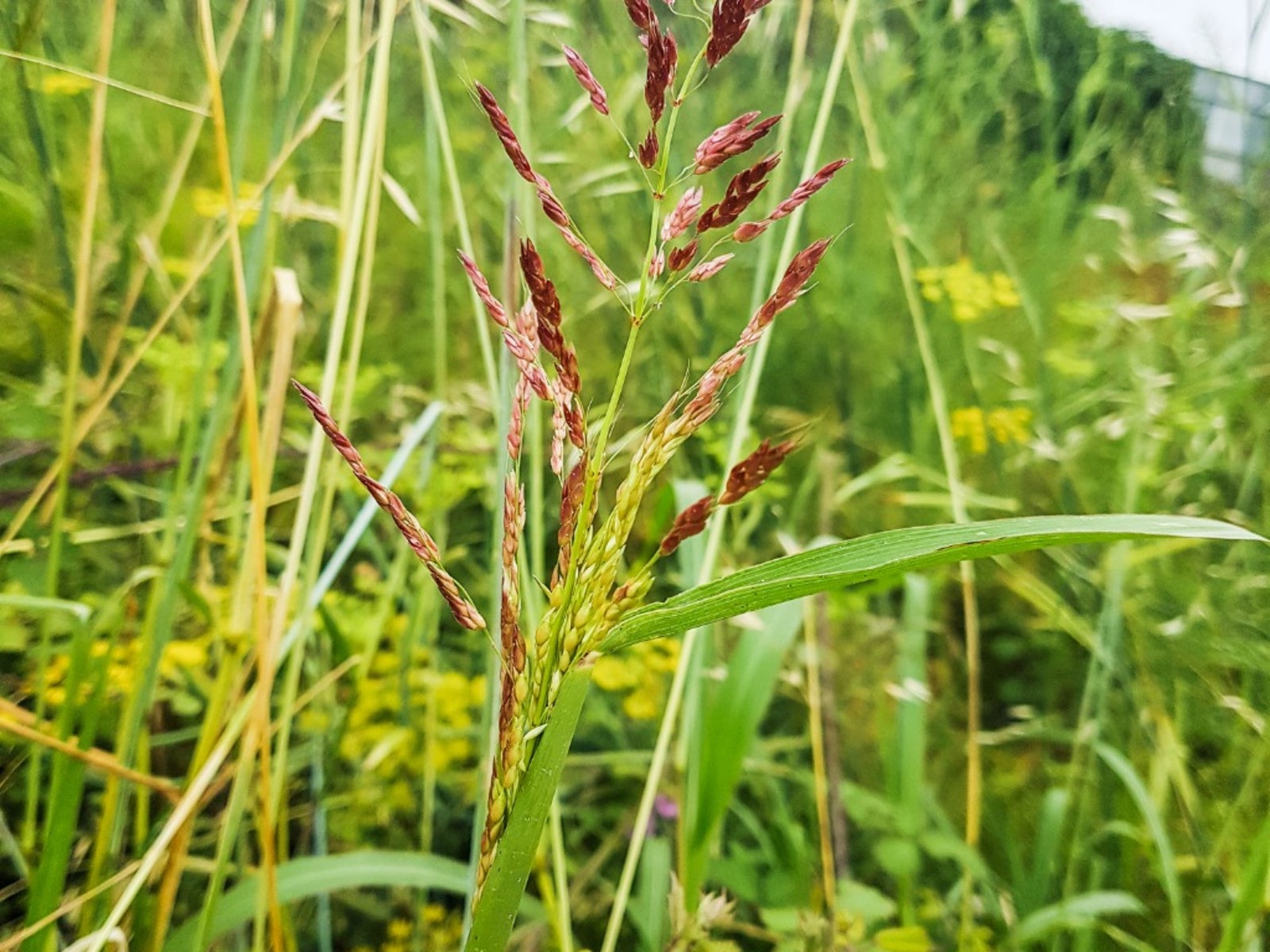Controlling Johnson Grass and How To Kill Johnson Grass
Johnson grass has plagued farmers since its introduction as a forage crop. Many states require landowners to kill the invasive and noxious Johnson grass.


Caroline Bloomfield
Johnson grass (Sorghum halepense) has plagued farmers since its introduction as a forage crop. This invasive and noxious weed has gotten so out of control that landowners in many states are mandated to kill it. If you are bothered by a troublesome invasion of this perennial weed, learn how to get rid of Johnson grass.
How to Get Rid of Johnson Grass
As with most invasive weeds and grasses, using multiple strategies usually works best for Johnson grass control.
Johnson grass reproduces and invades crop areas in two ways, spreading both by seed and rhizomes to overtake farmland and other areas of your property. The rhizomes of Johnson grass are identified by thick cream-colored rhizomes, covered with orange scales.
When combined with cultural practices that prevent the spread of rhizomes and seeds, an organic herbicide program may be helpful, but may still not eliminate it.
Tilling the soil in fall following the harvest and followed with an organic herbicide is a good start to killing Johnson grass. Rhizomes and seed heads brought to the surface by tilling may be destroyed.
The seeds of Johnson grass can remain viable for as long as ten years so it is best to prevent the seeds from being spread in the first place.
Take steps to prevent the spread of seeds and rhizomes to areas that are not infested. Digging clumps of Johnson grass in the yard or small garden is a start. Dispose of the clumps where they cannot reseed or spread. It is best to do this before the grass goes to seed, to further prevent the spread of the seeds.
Gardening tips, videos, info and more delivered right to your inbox!
Sign up for the Gardening Know How newsletter today and receive a free copy of our e-book "How to Grow Delicious Tomatoes".
When Johnson grass grows near the lawn, keep the turf thick and healthy to discourage the invasion of Johnson grass. Take a soil test and apply recommended amendments to keep the grass growing. Reseed thin areas of the lawn and mow at the proper height for your variety of grass to keep it healthy and competitive against the Johnson grass.
Recommended Johnson Grass Herbicides
Successful Johnson grass control may include the use of organic, environmentally friendly Johnson grass herbicides. It's important to consult with your local garden center or extension service to be sure you are using a product that won't contaminate the surrounding area, its soil and its plants.

Becca Badgett was a regular contributor to Gardening Know How for ten years. Co-author of the book How to Grow an EMERGENCY Garden, Becca specializes in succulent and cactus gardening.
- Caroline BloomfieldManager of Marketing Communications
-
 Looking For Plants To Give You The Soft And Fuzzies? Try These 5 Fuzzy Leaf Plant Options
Looking For Plants To Give You The Soft And Fuzzies? Try These 5 Fuzzy Leaf Plant OptionsLovers of texture, drama, silver foliage and tactile plants will adore these special sensory garden additions. These fuzzy leaf plant options will leave you all aglow
By Susan Albert
-
 Get Ready For A Summer Of Hummers! Grow These Full Sun Hummingbird Plants and Flowers
Get Ready For A Summer Of Hummers! Grow These Full Sun Hummingbird Plants and FlowersIf you’re lucky enough to enjoy a sunny backyard, make sure you are maxing out on your pollinator opportunities and grow these full sun hummingbird plants and flowers
By Tonya Barnett